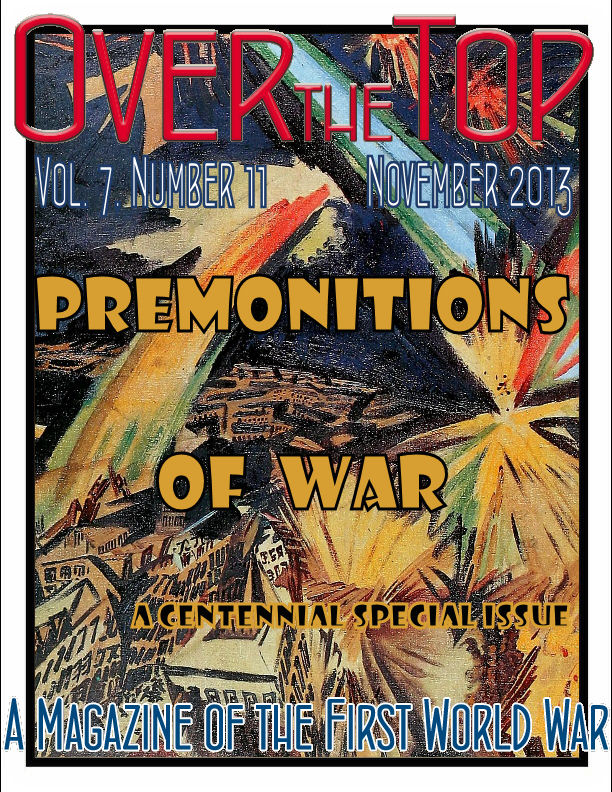
Eleventh Anniversary Issue
|
November 2013 |
 |
|


Five Ways to Remember the Fallen
Don't let Armistice-Remembrance-Veterans Day go without making a conscious, active effort to remember the fallen. Here are five suggestions:
1. Wear a red poppy.
2. Pause for a minute, whatever you are doing, at the 11th Hour of the 11th Day of the 11th Month.
3. Recite John McCrae's "In Flanders Fields" with your family and friends.
4. View a classic World War I movie like All Quiet..., Sgt. York, or Dawn Patrol.
5. Visit you local veteran's cemetery and lay a wreath or a single flower on a random grave.MH

|
2013
 League of WWI Aviation Historians, Atlantic Chapter, 12th Meeting, Steven F. Udvar Hazy Center, National Air & Space Museum, Dulles Airport, all day. League of WWI Aviation Historians, Atlantic Chapter, 12th Meeting, Steven F. Udvar Hazy Center, National Air & Space Museum, Dulles Airport, all day. Rescheduled for
Saturday, 16 November 2013
Downloadable Program and Details
 New York State Military Museum, "Fiery Trial and Sacrifice - New York and the First World War," ongoing exhibit, Saratoga Springs, NY. Virtual Tour. New York State Military Museum, "Fiery Trial and Sacrifice - New York and the First World War," ongoing exhibit, Saratoga Springs, NY. Virtual Tour.
 The National World War I Museum in Kansas City, MO, has a current exhibit running on "The Road to War," running through April 2014. Website. The National World War I Museum in Kansas City, MO, has a current exhibit running on "The Road to War," running through April 2014. Website.
 Annual WW1HA Bay Area Chapter Annual Armistice-Remembrance Event at 10:00 AM at Wedgewood at Metropolitan Golf Links (near Oakland Airport) 10051 Doolittle Drive, Oakland, CA Email Sal Compagno for details. Annual WW1HA Bay Area Chapter Annual Armistice-Remembrance Event at 10:00 AM at Wedgewood at Metropolitan Golf Links (near Oakland Airport) 10051 Doolittle Drive, Oakland, CA Email Sal Compagno for details.
 The MacArthur Memorial and Museum in Norfolk, VA, has a current exhibit running on "The 42nd 'Rainbow' Division in World War One," running through September 2014. Website. The MacArthur Memorial and Museum in Norfolk, VA, has a current exhibit running on "The 42nd 'Rainbow' Division in World War One," running through September 2014. Website.
2014
 The U.S. Air Force National Museum at Wright-Patterson AFB, OH, and the League of WWI Aviation Historians (OvertheFront.com), are collaborating on what will be the first U.S.-based mega-event for the WWI Centennial. The League is scheduling its 2014 Seminar to correspond with the WWI Dawn Patrol Fly-In at the Museum in Dayton, OH, 24-28 September 2014. Mark it down on your calendar. The U.S. Air Force National Museum at Wright-Patterson AFB, OH, and the League of WWI Aviation Historians (OvertheFront.com), are collaborating on what will be the first U.S.-based mega-event for the WWI Centennial. The League is scheduling its 2014 Seminar to correspond with the WWI Dawn Patrol Fly-In at the Museum in Dayton, OH, 24-28 September 2014. Mark it down on your calendar.
|
|
St. George Memorial Church, Ypres
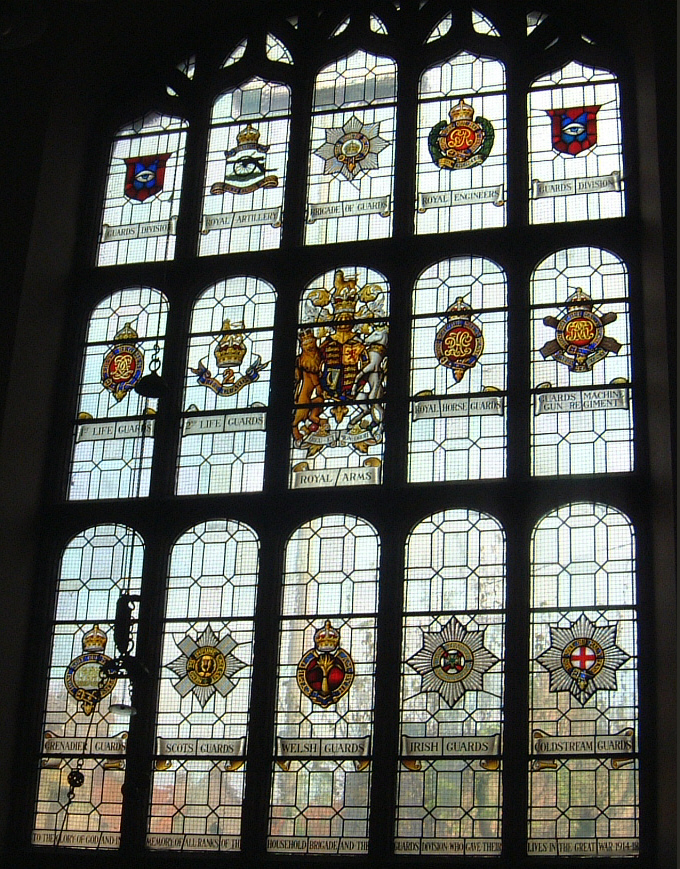
Stained Glass Window with Royal and Regimental Insignia

Negotiations at Compiegne
Some of the details of the actual negotiation of the Armistice are little known. This seemed like a good month for a brush up. By the way, does anyone know the present location of the actual signed document? Respond to: greatwar@earthlink.net.
 How the Armistice Was Negotiated
How the Armistice Was Negotiated
 List of German Delegation
List of German Delegation
 Foch-Hindenburg Armistice Telegrams
Foch-Hindenburg Armistice Telegrams
 The Armistice Terms
The Armistice Terms
 A German Delegate's View of the Negotiations
A German Delegate's View of the Negotiations
 Excellent Then and Now Photos of the Armistice Glade by Pierre
Excellent Then and Now Photos of the Armistice Glade by Pierre
 Musee 1914-1918 at the Armistice Glade
Musee 1914-1918 at the Armistice Glade
 Review of Thomas Keneally's Booker Prize Nominated Novel of the Armistice, Gossip from the Forest
Review of Thomas Keneally's Booker Prize Nominated Novel of the Armistice, Gossip from the Forest

German Vessels and the AEF
Old Fritz has been in a naval sort of mood lately, an odd state of affairs for a former Frontschwein like him. He thinks it was quite unsporting for the United States to have seized so many German vessels caught in port at the outbreak of war and then (this annoys Fritz) turn them into troopships to transport the AEF to France. At least 20 German ships were converted for such purposes and, after being refitted (and this part just drives Fritz to the wall) were given such new Americanized names as George Washington, Pocahontas, and even America

Troopship USS Mercury, Formerly SS Barbarossa

The men often cannot eat in the forward lines because of the smell of corpses, and they cannot sleep either.
Rupprecht Maria Luitpold Ferdinand, German Commander
|

|

U.S. Centennial Organizations & Resources
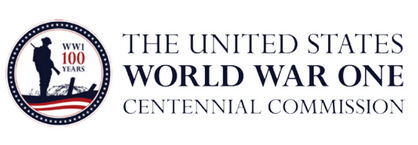
worldwar-1centennial.org/
|
This month we continue to bring you news about the progress being made by the new national Centennial Commission, as well as information about two exciting grassroots projects worthy of both your attention and support. Also, we welcome the World War I Memorial Foundation in Washington DC to our list of recommended participants and resources for the commemoration. MH
News About the WW1 Centennial Commemoration Commission
As we were going to press we received the sad news that the newly-elected chairman of the commission, Congressman Ike Skelton, has passed away. Vice Chairman Robert Dalessandro issued this statement to the commission:
"It is my sad duty to report the passing of Congressman Ike Skelton. Ike was a true American patriot, who dedicated his life to the service of his country. Beloved on both sides of the Aisle, he was a champion of our Armed Forces, veterans and civilians who served their country. His initiatives had a profound impact on the education of our officers and his love of history was profound. . .please keep his family in your thoughts and prayers." (Commission Tribute), (Obituary)
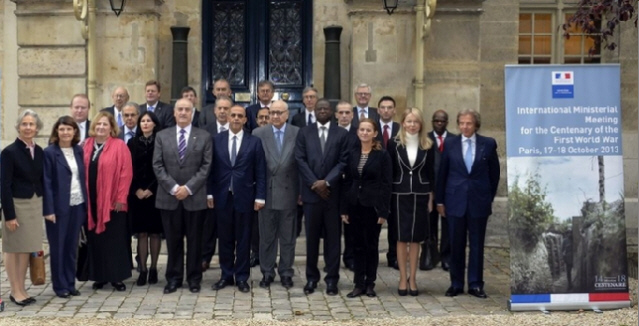

|
In October the Commission began engaging other nations with an interest in the Centennial as well as American groups enthusiastic about supporting the coming anniversary. Vice Chairman Robert Dalessandro and Commissioner Jerry Hester attended an international ministerial-level conclave in Paris (photo above) that began with great symbolism as the participants joined in relighting the eternal flame for the Unknown Soldier at the Arc de Triomphe.
Colonel Dalessandro (above left) also spoke to the East Coast (USA) Chapter of the Western Front Association, at their fall symposium, held this year at York, Pennsylvania. The meeting was a big success and, as part of the program, the 65 attendees heard about the fundraising challenges for the Commemorative Commission from its Vice Chairman. We will have more on this vital topic in future issues of the Trip-Wire.
A Grassroots Effort
Remembering the Camps
After the United States entered the Great War and decided to send an expeditionary force to Europe, Congress authorized 32 new camps, called cantonments–suggestive that these were the equivalents of small cities–to train the millions of new soldiers. The Navy, Marine Corps, and budding Air Service also needed to add training bases. Some of these camps (as they were known then) are still around today, redesignated as Forts: Devens in Massachusetts, Meade in Maryland, and Lewis in Washington state. All of these projects caused a major ripple in the communities where they appeared. Politicians at all levels found a way to promote themselves as part of the endeavor, realtors and local businessmen had a field day, and the local citizens discovered the joys and annoyances of having tens of thousands of active young males dropped into their neighborhoods.
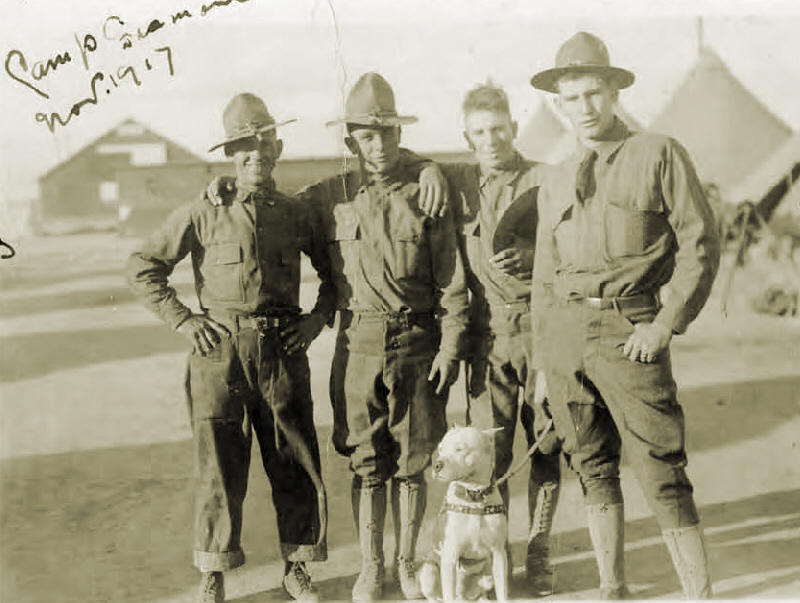
New Soldiers at Camp Fremont, California
The majority of these 1917-1918 sites—between the nation's changing needs and several waves of base closures—have disappeared. They have not, however, been forgotten. As part of the Centennial commemoration, planning committees are springing up at some of the still active sites to remember their World War I origins such as Camp Dix and Camp Devens.
Local historians are also reflecting on the influence of these huge camps on their communities, including many that were closed. One of these is Barbara Wilcox of Stanford University. She has researched and written an outstanding article about long-gone Camp Fremont located in Menlo Park, CA, and part of the adjacent Stanford campus. It is where the 8th Division trained, including some of the Siberian contingent. She has made available her article about Camp Fremont, " 'Fremont, The Flirt': Unearthing Stanford’s World War I Battleground" that appeared in Sandstone and Tile, the journal of the Stanford Historical Society. To download it, just click here for the pdf document.
Also, Barbara would like to network with other camp researchers across America. She can be contacted through email at: bwilcox@stanford.edu
A Grassroots Effort
Pershing's Last Patriot
As you know, I've dedicated all of my publications to support America's World War I Centennial commemoration. One of the grassroots efforts to honor the nation's sacrifice in the war is David Dejonge's biographical documentary exploring the dramatic life of the Last Doughboy – Frank Buckles, who was an absolutely wonderful representative of his generation. This is a project close to my heart because I served as master of ceremonies for the dedication of the paving stone honoring Mr. Buckles at the Liberty Memorial & National WWI Museum in Kansas City.
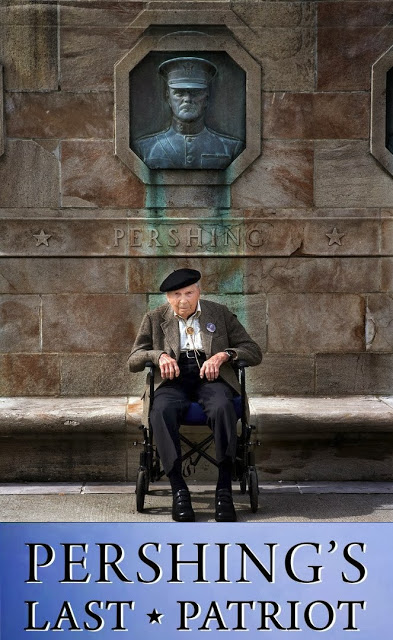
David needs your help – $14,000 of pledges – to turn his rough cut into a professional-level theatrical film. He is using a site called Kickstarter for gathering contributions and telling the story of his project. Please visit the site. I've already contributed, and I hope you will too.
http://www.kickstarter.com/projects/frankbuckles/pershings-last-patriot
From the MacArthur Memorial
An Outstanding Educational Resource
The staff of the MacArthur Memorial that we introduced to our readers last month are creating some superb WWI educational resources. They have just made available on YouTube the first program in their video history of the First World War, titled "1914: The Road to War." The 13-minute video features an accurate, professionally narrated script and outstanding visuals, including clear-to-follow maps. Please view it yourself and send the link to any educators and young persons who might be interested in the events of 1914-1918:
http://www.youtube.com/watch?v=p9rXwt6n1cU&feature=em-upload_owner
|
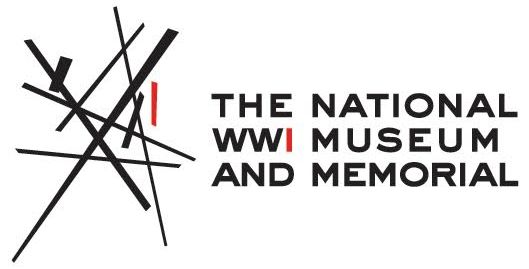
theworldwar.org/
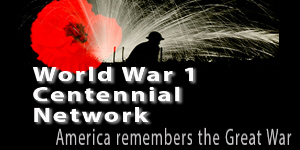
www.ww1-centennial.org/

history.army.mil/
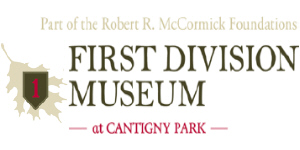
www.firstdivisionmuseum.org/

www.abmc.gov/
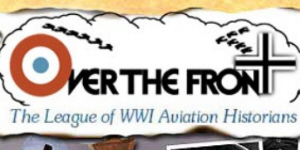
www.overthefront.com/
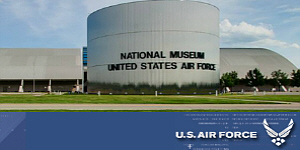
www.nationalmuseum.af.mil/
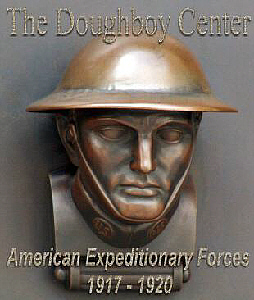
www.worldwar1.com/dbc/
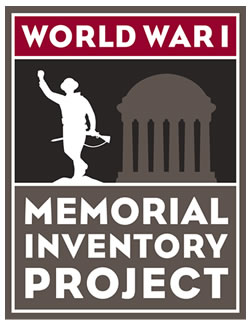
wwi-inventory.org/
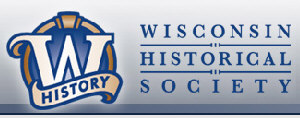
wisconsinhistory.org/
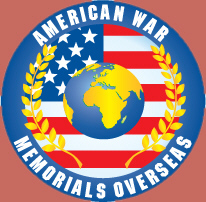
www.uswarmemorials.org/
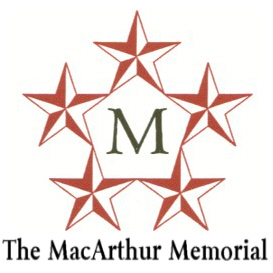
www.macarthurmemorial.org/
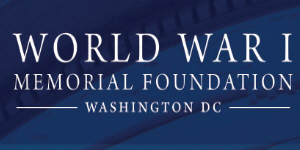
www.wwimemorial.org/
|
|

November 1913
Austria-Hungary Tilts Decisively Toward
War with Serbia
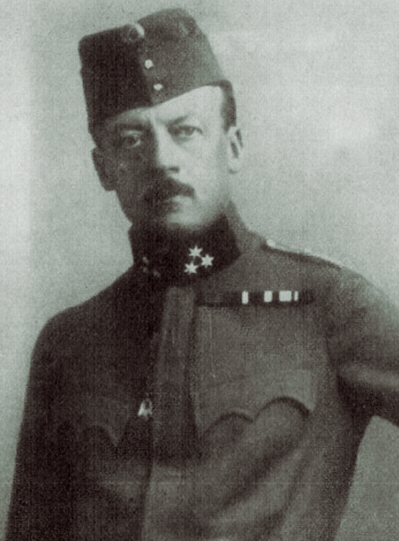
Foreign Minister Berchtold |

Chief of Staff Conrad |
In October's edition of Over the Top, we covered the Austrian-Serbian confrontation over Albania. Eventually, Serbia withdrew its occupying forces, but there was an important follow-up. The crisis led to a shift in the thinking of key leaders of the Empire — particularly Foreign Minister Count Leopold Berchtold.
Up to the October events, Berchtold had resisted buying into Chief of Staff Franz Conrad von Hötzendorf's relentless entreaties for a punitive war against Serbia (25 appeals in 1913 alone). However, the Foreign Minister began to apprehend that the multi-culture empire was dissolving. For instance, a plan to grant some autonomy to Croats was bitterly opposed by Hungary's Magyars, and the Croats and Serbians within the empire were now supporting each other's list of grievances and separatist impulses. Constant expansionist pressure by Serbia, Berchtold became convinced, encouraged and now seemed to be accelerating such disorderly movements. He concluded that some sort of control over Serbia was essential for the survival of his state, that punitive action against Serbia (this sounds somewhat illogical in hindsight) was the only way to solve the problem of the Slav nationalities within the Empire. From November 1913, Berchtold and Conrad began waiting for the right moment to attack Serbia.
The last remaining obstacle to this "War Party" was the heir apparent, Franz Ferdinand, who understood the threat posed by Serbian activism, but wanted to avert confronting the Russians. His hope was that the upcoming military maneuvers in Bosnia Herzegovina, , scheduled for June 1914, would awe and impress the Empire's own southern Slavs and arrest the crumbling. That event, however, would lead to his death, eliminating the last substantial opponent to the war party.
Sources: J. Joll, The Origins of the First World War
|
|

Flyers and application form for 2014 "Opening Moves" and
"Miracle of the Marne" Trips Now Available. An additional comprehensive Western Front tour is being planned for Summer of 1915. More information to follow.
(download pdf file here)

Click on Image to Send Email
|
|
|

|

William Lawrence Bragg
(1890-1971)
Nobel Prize, Physics, 1915
|

Bragg Was the Youngest
Nobel Laureate Ever
| |
William Lawrence Bragg, son of William Henry Bragg, was born in Adelaide, South Australia, on 31March 1890. He received his early education at St. Peter's College in his birthplace, proceeding to Adelaide University to take his degree in mathematics with first-class honors in 1908. He came to England with his father in 1909 and entered Trinity College, Cambridge, as an Allen Scholar, taking first class honors in the Natural Science Tripos in 1912.
In 1914 he was appointed as Fellow and Lecturer in Natural Sciences at Trinity College. From 1912 to 1914 he had been working with his father, and the results of their work were published in an abridged form in X-rays and Crystal Structure (1915). It was this work which earned them jointly the Nobel Prize for Physics in 1915. From this year to 1919, Bragg served as Technical Advisor on Sound Ranging to the Map Section, G.H.Q., France, receiving the O.B.E. and the M.C. in 1918. Sound ranging allowed the detection of the type and location of enemy artillery.
After the war, he was appointed Langworthy Professor of Physics at Manchester University in 1919, and held this post till 1937, when he moved back to Cambridge, where he soon became the head of the prestigious Cavendish Laboratory.
Mary Pickford
(
1892-1979)
America's Sweetheart
Mary Pickford was the most popular woman of her day. She was "America's Sweetheart," and millions of fans around the world called her "our Mary." Her rise to unprecedented global fame coincided with the rise of popular cinema, and during those early years of film, Mary Pickford was its most adored and dynamic star. in 1913, she made a deal with Adolph Zukor, joining his Famous Players Film Company for the grand salary of $500 a week (over $9000 in today's dollars).
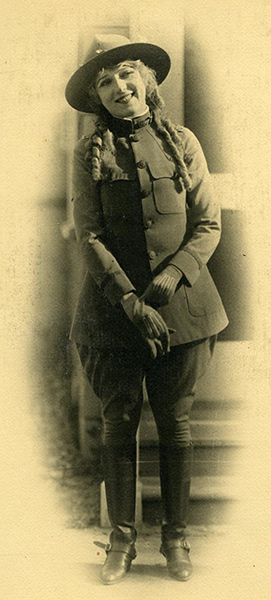
Mary Pickford in
Johanna Enlists |
When her first marriage began to fail Pickford met and fell in love with the handsome film actor Douglas Fairbanks. But they were both married and feared catastrophic consequences for their careers if they divorced. They appeared before huge crowds together on tours promoting war bonds for World War I, but they always managed to hide their relationship from the public. She made many of her best movies during the war years.
Her notable war films in this period included C.B. DeMille's The Little American in which her character has her ship torpedoed by a German U-boat but makes it back to ancestral home in France, where she witnesses German brutality firsthand, and Johanna Enlists in which a young girl, stifling on her father's backwoods farm, is reinvigorated by the arrival of an army regiment, come to train in the area. She also made a short feature to help promote the Liberty Bond program, One Hundred Percent American.
Finally, Pickford and Fairbanks decided to risk everything: they divorced their spouses and were married privately in 1920. The advent of the "talkies" were not kind to her and she spent the rest of her life in show business but out of the spotlight she once dominated. Her storybook marriage to Fairbanks ended in 1936.
|
|

Support Roads to the Great War by shopping through us at Amazon.com. This is how we keep our free publications rolling along and you don't have to buy any WWI books to help us. Once you click on any of my favorite WWI titles below, we get credit for any type of sale.
The Editor's Favorite Great War Classics
|

General John J. Pershing
Visits the Unknown Soldier
11 November 1938
|
On the twentieth Anniversary of the Armistice the commander of the AEF was given the honor of laying a wreath at the Tomb of the Unknown Soldier at Arlington National Cemetery. It was the first occasion on which Armistice Day, by public law, was celebrated as a national holiday. The day before, General Pershing was asked for his views on the nation's security. Below is a newspaper account of his response:
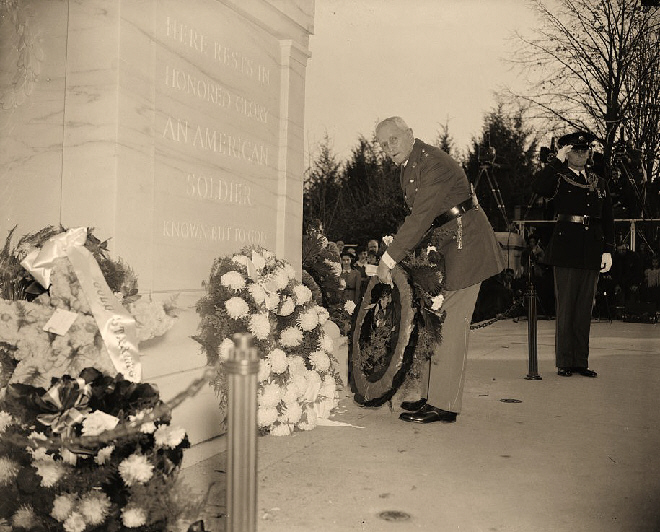
Headline: "Pershing Calls for Strong Defense —
Urges Immediate Action to Build Up Forces"
General John J. Pershing counseled the nation Thursday, 20 years after he led the American armies to victory In the World War, to take "prompt and vigorous action" to reinforce its defenses. "The situation in the world today is as menacing as at any critical time in history," the gray, but erect, commander of the AEF said in an Armistice day statement, "Lest there be visited upon us the recent experience of England and France," he urged an "adequate," thoroughly trained and mobilized industry. "We are the natural protectors of the freedom of this hemisphere, and we cannot escape our obligation," he declared.
Pershing's pronouncement, a rare expression of his views on public affairs, came on the eve of a nationwide observance of a day of peace which is overshadowed this year by reminders of war. By an act of congress, the anniversary of the World War's end is a national holiday for the first time. President Roosevelt, Pershing, as general of the armies, and representatives of a score of patriotic organizations will lay wreaths on the Tomb of the Unknown Soldier in Arlington national cemetery. . . To meet what he described as the requirements of national defense "promptly and without excitement," General Pershing said, "is, in my opinion, the most important duty that confronts the American people on this twentieth anniversary of the armistice." "The performance of that duty should preserve our peace, and if that proves impossible will enable us to be secure behind our defenses," he added. "More than this, it will bring home to other governments our strength, and will pave the way for reduction in armaments, which is the wish of all of us who hate war." The Armistice twenty years ago ended the greatest war in history.
We in America are proud of the record of our armies in that terrific struggle and we cherish the memory that they were the decisive factor in the defeat of the common enemy. "The lessons of war, with all its appalling loss of human life and its cost and its threat to the very, existence of our civilization, stand out plainly before us."
THE SALT LAKE TRIBUNE, FRIDAY MORNING, NOVEMBER 11, 1938.
|
|
|

Last Gasp for the Allies at Gallipoli,
Showdown at Suvla and Chunuk Bair
9-10 August 1915
After a fumbled opening to the landings at Suvla Bay and the Turks' strong resistance to the push from Anzac, things were looking more promising for the Allies. New Zealand troops had finally reached the peaks of strategic Chunuk Bair. A big push in support was starting to move out from Suvla Bay. With the situation desperate, the German commander of the Turkish forces sent his best man to the scene. Robert Rhodes described what happened then:
To take charge at Chunuk Bair, the Turkish high command now dispatched Colonel Mustafa Kemal, a senior officer who led from the front. On 9 August, Kemal routed the British as they advanced across the Suvla plain. In the evening he rode up to Chunuk Bair where the Turks were faltering under the British naval bombardment and the strong stand of the New Zealanders. Convinced that the time had come for an all-out counter-attack, Kemal ordered his men forward at dawn on 10 August in a bayonet charge. [Meanwhile] the New Zealanders finally left Chunuk Bair. In their place stood soldiers of the British 6th Battalion of the Loyal North Lancashire Regiment and the 5th Battalion of the Wiltshire Regiment.
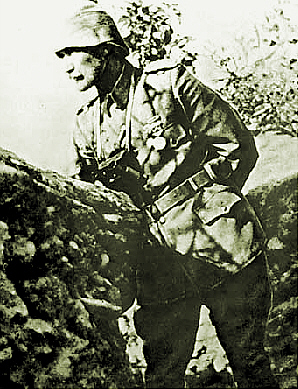
Mustafa Kemal at Gallipoli
| |
As planned, Kemal ordered his men forward at dawn on 10 August in a bayonet charge. He later recounted his actions that morning:
The blanket of night had lifted. Now was the hour for the attack. I looked at my watch. It was nearly 4.30 am. After a few minutes it would become quite light and the enemy would be able to see our troops. Should the enemy infantry open fire with his machine guns and should the land and naval guns open fire on our troops in our close packed formation I didn't doubt the impossibility of the attack .... I greeted the men and addressed them:
"Soldiers! There is no doubt that we can defeat the enemy opposing us. But don't you hurry, let me go in front first. When you see the wave of my whip all of you rush forward together!"
Then I went to a point forward of the assault line, and, raising my whip, gave the signal for the assault.
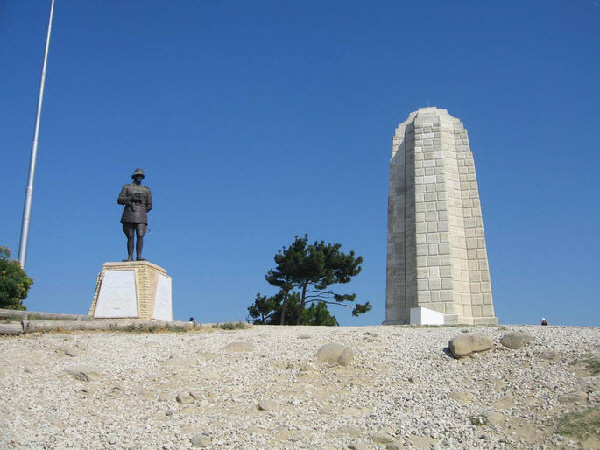
Side-by-Side Atop Chunuk Bair Stand Monuments to
Mustafa Kemal and the New Zealanders Who Had Captured the Peak
The Turks rushed forward and swept the British from the heights of Chunuk Bair and had regained Chunuk Bair and no British Empire soldier ever again beheld the Dardanelles from that peak.
Sources: Robert James, Gallipoli and the Anzacsite.gov.au Website
|
|
|
Thanks to each and every one of you who has contributed material for this issue. Until December, your editor, Mike Hanlon. |
|
 (Or send it to a friend)
(Or send it to a friend)
|
Design by Shannon Niel
Content © Michael E. Hanlon
|
| |
|










